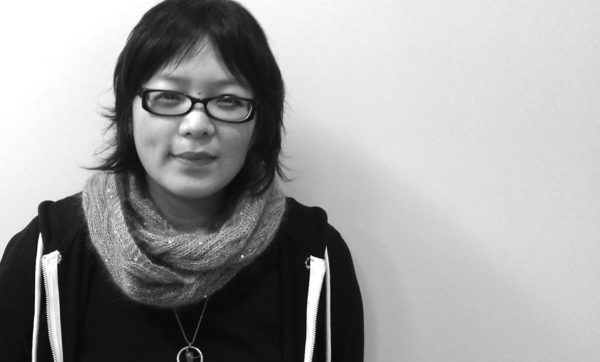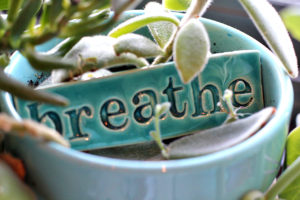Expanding neuroscience to be more diverse and inclusive is an important and needed direction for the field because mental health interventions that may work for certain people may not translate to underrepresented groups.
A recent paper published in Frontiers in Psychology explored a promising research framework that adapts research on well-being practices, such as meditation, to be more inclusive to underrepresented groups of people.

“Meditation practices hold so much promise for building more compassionate and equitable societies, as our research has shown that compassion meditation increases prosocial behavior and neural responses to suffering,” says the lead author on the study, Helen Weng, who is an assistant professor of Psychiatry and Behavioral Sciences at the Osher Center for Integrative Medicine at the University of California, San Francisco, and a collaborator and former graduate student at the Center for Healthy Minds. “However, we need to be truly inclusive in our research to ensure our findings apply to more people, and we also need to be humble enough to learn how diverse groups are already using contemplative practice to support well-being and social justice. By using community engagement with diverse groups, and sharing credit and resources, we can turn the research process into an embodied form of social action.”
Studies that are more diverse and inclusive can help researchers better evaluate the effectiveness of contemplative practices for people who belong to minority groups and who are at increased risk for trauma. In addition, learning how underrepresented groups have adapted contemplative practices for their unique experiences, such as the East Bay Meditation Center in Oakland, California, may inform better research and teaching.
"We need to be truly inclusive in our research to ensure our findings apply to more people, and we also need to be humble enough to learn how diverse groups are already using contemplative practice to support well-being and social justice"
“We need to recognize that not all bodies are the same and people are not the same psychologically either,” says Mushim Ikeda, community director at the East Bay Meditation Center, meditation teacher, social justice activist, writer and co-author on the new paper. “This work is a step toward more intersectional and inclusive neuroscience where dimensions of diversity are included rather than excluded in order to get more accurate research findings.”
As a meditation instructor, Ikeda promotes a trauma-informed approach to meditation practice, taking into account everything from physical space to language as contributors (or detractors) from people’s emotional healing and well-being.
“People with trauma may find it difficult or impossible to learn if they feel they are commanded with no choice or agency,” says Ikeda. “Language like, ‘Now do this, now do that,” may not be suitable for all people. Teachers need to be aware of this possibility and probability because we live in a highly traumatized society.”
Ikeda says more inclusive language is more invitational and could include phrases like, If this is accessible to you, If this is available to you, or If you like. You can learn more about this in a recent Q&A with Ikeda.
“This work is a step toward more intersectional and inclusive neuroscience where dimensions of diversity are included rather than excluded in order to get more accurate research findings.”
In addition, Weng and colleagues focused on how to make the analysis of neuroscience data more inclusive, too. Called the “Intersectional Neuroscience” framework, the approach featured in the study has two aims – first, to build community engagement with a group of diverse participants through more inclusive recruitment practices. And second, to adapt neuroscience research methods to be more inclusive of underrepresented groups by using algorithms to help scientists doing analysis on brain image data to decrease the need to rely on group averages of neural activity, which may not apply to every individual.
Throughout the partnership, researchers developed person-centered screening and study materials and collaborated with leaders and members of the East Bay Meditation Center to recruit 15 diverse meditators (80 percent racial and ethnic minorities, 53 percent gender identity and sexual orientation minorities) for a neuroscience study. The team held a focus group and community meetings with people of various racial and ethnic backgrounds, LGBTQIA+ people, and individuals with disabilities and chronic health conditions to gain a broad perspective on the study and recruitment materials.
The second method to improve inclusivity was to consider ways to accommodate neural diversity that allows more people from underrepresented groups to take part in the study. Functional magnetic resonance imaging (fMRI) screening often excludes individuals with “non-normal” brain structure and function, including those who are left-handed, and those with mental health conditions and neurological disorders.
To be more inclusive, the research team (also including Center for Healthy Minds faculty member Larissa Duncan) used neuroscience methods that are more focused on each individual to accommodate neural diversity, leading to fewer people being excluded from taking part in the study. Researchers were able to identify participants’ mental states during breath-focused meditation, which collects more data from each person to find their unique brain function that represents attention to internal experiences like the breath. The data was used to determine attention for individual participants during meditation – such as the amount of time they paid attention to their breath or how often their mind wandered.
"I hope this work shows that the research process can be transformed into a form of social action, and that in order to make more discoveries and impact more people, academic institutions need to build structures that support diverse scientists and include diverse participants.”
Overall, the study was able to demonstrate the feasibility of using an intersectional neuroscience approach in a way that includes a more diverse group of participants and uses a more individualized approach to measure neuroplasticity.
“As a neuroscientist, I use the power of privilege and power of my research methods to highlight areas of social inequity, so that we may use our contemplative practice to address these wounds and ease suffering,” says Weng. “I am very grateful for the opportunity to work with the East Bay Meditation Center. I hope this work brings attention to how they use contemplative practice to create a more inclusive and multi-cultural community, and to ease suffering due to oppression and discrimination. I hope this work shows that the research process can be transformed into a form of social action, and that in order to make more discoveries and impact more people, academic institutions need to build structures that support diverse scientists and include diverse participants.”






